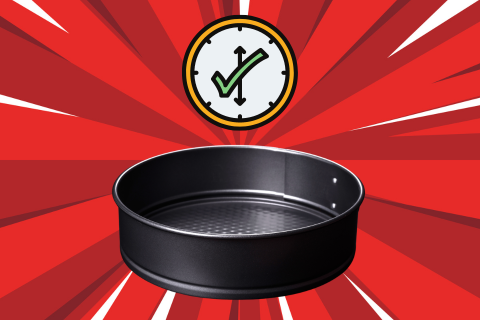Introduction:
Choosing the right cake tin can significantly impact the quality and success of your baking. Whether you're a novice baker or a seasoned pastry chef, understanding the different types of cake tins and their uses is essential. This article will guide you through selecting the perfect cake tin to match your baking needs, ensuring delicious results every time.
1. Understanding Cake Tin Materials
The first step in choosing the right cake tin is understanding the different materials available and their properties
Aluminum:Non-stick:
Silicone:
Stainless Steel:
2. Selecting the Right Size and Shape
Size and shape are critical when selecting a cake tin, as they directly affect baking times and the cake's final appearance:
Round Tins:Square and Rectangular Tins:
Novelty Shapes:
Springform Tins:
3. Depth Matters
Depth is another important factor when choosing a cake tin:
Shallow Tins:Deep Tins:
4. Considering the Recipe Requirements
Different recipes will require different types of tins. For example:
Sponge Cakes:Dense Fruit Cakes:
5. Heat Conductivity and Durability
Consider how different materials conduct heat:
Aluminum Tins:Silicone Tins:
Durability is also a factor. Metal tins tend to last longer and stand up to high temperatures better than silicone.
6. Ease of Maintenance
Choosing a cake tin that is easy to maintain will save you time and ensure your tin lasts longer:
Non-stick Tins:Silicone Tins:
Metal Tins:
7. Price and Quality
While it may be tempting to go for cheaper options, investing in high-quality cake tins can improve your baking results and longevity of the tin:
Invest in Quality:Consider Your Baking Frequency:
8. Tips for Testing Cake Tins
Before you decide to buy, consider these tips:
Read Reviews:Check for Warping:
Conclusion:
Choosing the right cake tin is more than just picking a shape and size. Consider the material, depth, recipe requirements, heat conductivity, durability, ease of maintenance, and your budget. By taking the time to select the appropriate cake tin, you enhance your baking experience, ensuring delightful results that look professional and taste delicious. Whether you are baking for a special occasion or just a weekend treat, the right cake tin can make all the difference. Happy baking!




